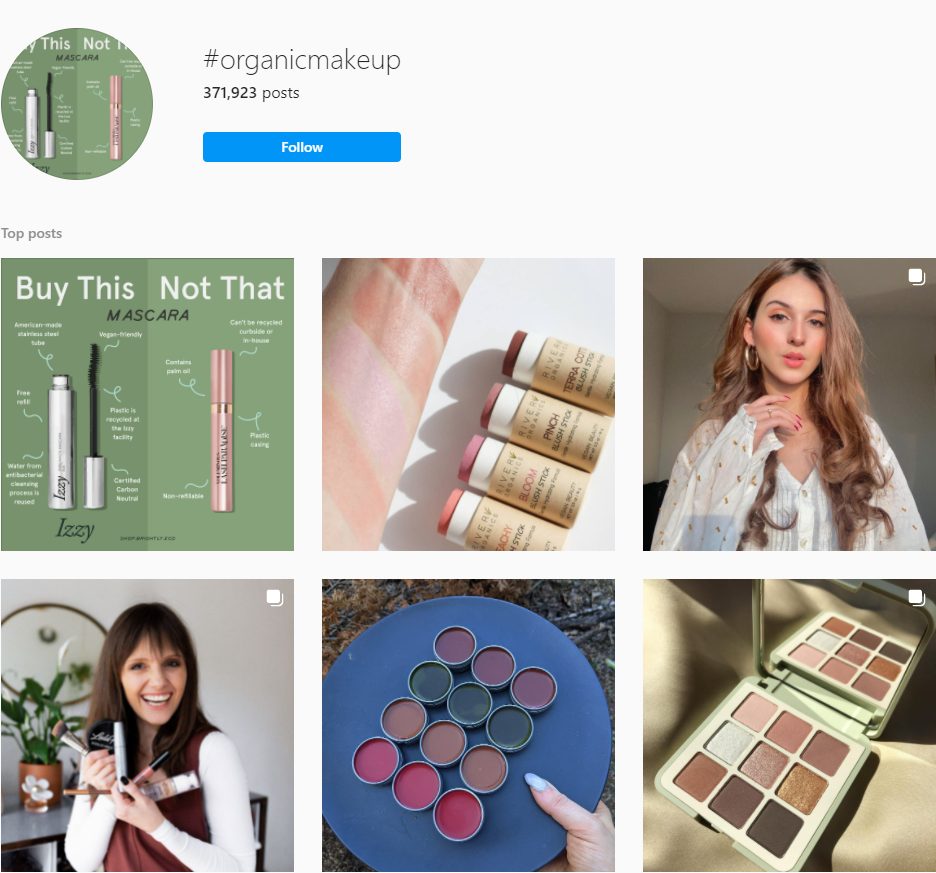Micro-influencers have become a hot topic among brands and marketers and are becoming more and more sought after by brands looking to use influencer marketing. Typically these are influencers with between 1K-50K followers on social media that have real authority, and in many cases, their endorsements can be more impactful than a celebrity. Micro-influencers typically build their audiences with a unique voice and topic. Their followers have similar interests, care about what they say, and trust the influencers’ opinions. Because of this, when you partner with micro-influencers, brands are able to reach audiences with an interest in a particular industry such as fitness, natural beauty products, fashion, design, etc.
When a brand works with targeted micro-influencers, the results can be very impactful. One thing all micro-influencers have in common is that they are passionate and knowledgeable about their niche, which makes them an affordable and powerful asset to brands. If you are planning on working with micro-influencers, crafting your campaign invite is important. The following steps will guide you through building a campaign that will help you reach your brand goals and objectives.
Summary: Quick Jump Menu
Step 1: Clear Goals
Before you even start looking into influencer marketing, make sure you know what you want to measure. Are you looking to grow your social audience? Lead generation? Launch a product into a new market? Describe what you expect from the campaign before you start so that you can track progress against your goals.
By setting goals up front, you can measure success while the campaign is live and make adjustments as you see fit. Every influencer you work with might not get you the results you are looking for, and if this is your first time working with influencers, it is important that you know what is and isn't working so you can make changes to your campaign.
Step 2: Describe Your Dream Post
Before you start, describe the type of posts (i.e. images, vertical video or both) you want, and the social platforms you want to target. Based on the hundreds of campaigns we have seen on BrandBrief, micro-influencers tend to have the biggest impact and highest following on Instagram. Instagram is visual and interactive, which makes it a great platform for discovery.
When you are deciding on the type of post you want, it is important to think about what will be the most beneficial for your brand. You want to make sure that the platform you choose is the right fit for the product or service you are looking to promote. For instance, if your company sells hair products and they just released a new curling iron, you might want to have influencers post time-lapse or Boomerang style videos on Instagram Stories of them using your product so that their followers can see how it works.
With Instagram’s new 'Swipe Up' link feature on Stories, influencer marketing is more interactive and engaging than ever and means that brands and organizations can measure traffic clicking on specific URLs and e-commerce platforms outside of the Instagram App. Stories allow for influencers to speak authentically in their own words about a product or service. Micro-influencers are in increasing demand, and they will only work with brands they feel align with their audience so when you partner with them, they will be able to portray your brand’s positive message in a way that resonates with their followers. Since these influencers know their followers so well and they are fans of your product, they will know exactly how to speak to their followers so that they will want to learn more about your brand.
'Swipe Up' links are becoming a crucial marketing tool. Micro-influencers have grown their audience based on their unique voice and opinions, so by having them talk directly to their followers, there is a transparency that you do not get with a staged photo. Even though Stories expire and disappear after 24 hours, there is an urgency to swipe and learn more about the product or service immediately.
Step 3: Attracting the Right Influencers and Creating Powerful Content
There are hundreds of thousands of micro-influencers, but since they aren’t household names, they can be harder to find than influencers with millions of followers or celebrities. It is possible to search for relevant hashtags on Instagram, Twitter, or Facebook but this can be time-consuming and painful. If your brand is an organic beauty product, you could check hashtags like #crueltyfree #organic, or #organicmakeup and then sort through the posts to find micro-influencers that match your brand and have a similar message.

Source: instagram.com
Innovative platforms like BrandBrief simplify the process of attracting influencers by crowdsourcing content submissions. Brands post a campaign on the website which in turn gets published into the BrandBrief Influencer App. Influencers in your target locations, demographics, and interest genres get a notification about your campaign. BrandBrief has the option to target Facebook, Instagram, LinkedIn and Twitter, so no matter which platform you chose you are able to easily attract the right influencers to turn your creative brief into authentic content. Another benefit of platforms like BrandBrief is that you get to approve/decline submissions quickly and easily.
Step 4: Measure Your Success in Real-Time
Once the influencers post on their accounts, measure engagement and click-throughs in real time. If you activate multiple influencers, you can easily compare the success of each post and see which influencers reached the highest number of people and had the most engagement. For Instagram stories, influencers can share the analytics of how many views the story received. Instagram is testing a new disclosure tagging and insight tools, so brands have increased visibility into how their campaigns are performing to help measure ROI.
[ebook title="How To Measure Influencer Marketing ROI" text="The Complete Brand Marketer's Guide" button="Get The Free eBook" img="https://influencermarketinghub.com/wp-content/uploads/2016/11/img_bg_1.jpg"]
It is important to build ongoing relationships with influencers so you can create lasting and successful partnerships. When you partner and fine-tune your campaign and messaging with them, they'll take your social marketing to the next level. Micro-influencers have the ability to reach your target audience and market your product in an effective, authentic way.



